- Joined
- Feb 1, 2004
- Messages
- 34,813
- Reaction score
- 822
- Location
- Lower Saxony, Germany
- Can others edit my Photos
- Photos NOT OK to edit
Just some thoughts that I have had for the past couple of weeks and which I would like to put together in writing. They are about The Moment in Time, personal and global history, and the photo as one means to capture such moments for all times (or a long time at least).
Given the fact that my father is working on a quite comprehensive presentation to be held in August of this year on 57 years of friendship between people of my hometown and people of a place in Northern-Ireland, I have been exposed to quite a bit of history, albeit only small-scale history. When he started to seriously work on his long-held idea of putting all the material collected by everyone involved in the visits to and fro into one presentation, he received lots and lots of photographs by other people of my home-town. Some have either been among a group of hosts or a group of interested citizens that went to travel to Northern-Ireland who only at a certain point in time were connected with the twinning or partnership, and some like my family have been involved in the activities ever since they first got in touch with them. This has been so for my family since 1960.
Not only did my father receive just about all the photographs taken by my hometowns citizens (he never asked the Irish so far, for this presentation is meant to be a surprise to them), but also travel journals, lists of participants, the visitors programmes, newspaper clippings from both the local papers of my home-town as well as those from the Northern-Irish place, provided someone got hold of them at the time and still had them stored away somewhere.
Among the photos there are a good many snapshots. In other words: the majority of the photos that were taken by group participants in the 50s are only just that: snapshots. Someone brought a camera and simply snapped away.
Since it is turning out that in the end my sister and I are working on the actual texts to speak both in German and English I got to look at all those photos and read all those 50-year-old travel journals, too. And I learned to appreciate the snapshot!
For while many of the photos taken at the time by those who did take them were no where near being artistic (something that had never been the plan to begin with, I should say), they are still there, and that gives them some kind of importance. They may have been forgotten in someones albums for decades, and still: right now, and for us, they regain a meaning. Particularly those photos taken in 1960, when the very first group came over from Northern-Ireland (two German groups had gone there in 1952 and 1959), in which we detected the very young faces of people who are STILL connected with the twinning and who will be among the group to arrive in August, i.e. among those to be surprised by this presentation.
And this is how I came to feel that a mere snapshot still has a right of its own in photography, since it captures a moment in time which would otherwise have come and gone and be forgotten in the blink of an eye.
This is not to say that I now embrace each and every snapshot with pleasure, for poor composition, poor lighting, poor exposure and a poor eye simply do not make good photos.
And in those 10 years that my first-born son Kristian lived (between 1980 and 1990), I took an awful LOT of snapshots that today make me SHUDDER under their photographic aspect. But without those a lot less would have been left for me these days of my first-born son. Just for example.
When my father first took me into the boat and suggested I take up a major part in the making of that presentation, he e-mailed me his ideas and his first scanning results with his (at that time) brand-new scanner. For, of course, there are a good many photos taken by my dad himself that cover those visits to and fro (as of 1960, like I was saying earlier). And he set about to scan the negatives of his own photos and wanted to share some of that earliest work with me.
That is how this photo came into my possession (digitalised as it now is, but I remember to have seen it as print when I was younger), and it is, in fact, just a snapshot, but has gained quite a bit of meaning (if only to the persons shown in this very photo) in the course of time:

Who do you see?
Well, there is my mother. And myself in the pram biggrin: ), and my sister, giving the photographer a very cool wave, and Jim, 19 at the time, 66 today and one to be among the group who are coming in August, and for whom we are working on this presentation.
biggrin: ), and my sister, giving the photographer a very cool wave, and Jim, 19 at the time, 66 today and one to be among the group who are coming in August, and for whom we are working on this presentation.
And another one that my dad mailed to me and that I find endearing, taken in the same year, when my dad and uncle also made a 7 minute colour film in N8 of the Northern-Irish group's arrival to my home-town, a film that they presented on the fairwell night of that group's stay, and which was quite well received and even got mentioned in the paper at the time, and this other snapshot I want to show you is of my uncle working on that film in his room:

Knowing that my uncle is very, very sick these days, it is good to see that we all once were young in our lives, and eager, and passionate, and loving and laughing, crying ... all this.
That's why even snapshots very much have their right of being, I think .
.
Given the fact that my father is working on a quite comprehensive presentation to be held in August of this year on 57 years of friendship between people of my hometown and people of a place in Northern-Ireland, I have been exposed to quite a bit of history, albeit only small-scale history. When he started to seriously work on his long-held idea of putting all the material collected by everyone involved in the visits to and fro into one presentation, he received lots and lots of photographs by other people of my home-town. Some have either been among a group of hosts or a group of interested citizens that went to travel to Northern-Ireland who only at a certain point in time were connected with the twinning or partnership, and some like my family have been involved in the activities ever since they first got in touch with them. This has been so for my family since 1960.
Not only did my father receive just about all the photographs taken by my hometowns citizens (he never asked the Irish so far, for this presentation is meant to be a surprise to them), but also travel journals, lists of participants, the visitors programmes, newspaper clippings from both the local papers of my home-town as well as those from the Northern-Irish place, provided someone got hold of them at the time and still had them stored away somewhere.
Among the photos there are a good many snapshots. In other words: the majority of the photos that were taken by group participants in the 50s are only just that: snapshots. Someone brought a camera and simply snapped away.
Since it is turning out that in the end my sister and I are working on the actual texts to speak both in German and English I got to look at all those photos and read all those 50-year-old travel journals, too. And I learned to appreciate the snapshot!
For while many of the photos taken at the time by those who did take them were no where near being artistic (something that had never been the plan to begin with, I should say), they are still there, and that gives them some kind of importance. They may have been forgotten in someones albums for decades, and still: right now, and for us, they regain a meaning. Particularly those photos taken in 1960, when the very first group came over from Northern-Ireland (two German groups had gone there in 1952 and 1959), in which we detected the very young faces of people who are STILL connected with the twinning and who will be among the group to arrive in August, i.e. among those to be surprised by this presentation.
And this is how I came to feel that a mere snapshot still has a right of its own in photography, since it captures a moment in time which would otherwise have come and gone and be forgotten in the blink of an eye.
This is not to say that I now embrace each and every snapshot with pleasure, for poor composition, poor lighting, poor exposure and a poor eye simply do not make good photos.
And in those 10 years that my first-born son Kristian lived (between 1980 and 1990), I took an awful LOT of snapshots that today make me SHUDDER under their photographic aspect. But without those a lot less would have been left for me these days of my first-born son. Just for example.
When my father first took me into the boat and suggested I take up a major part in the making of that presentation, he e-mailed me his ideas and his first scanning results with his (at that time) brand-new scanner. For, of course, there are a good many photos taken by my dad himself that cover those visits to and fro (as of 1960, like I was saying earlier). And he set about to scan the negatives of his own photos and wanted to share some of that earliest work with me.
That is how this photo came into my possession (digitalised as it now is, but I remember to have seen it as print when I was younger), and it is, in fact, just a snapshot, but has gained quite a bit of meaning (if only to the persons shown in this very photo) in the course of time:

Who do you see?
Well, there is my mother. And myself in the pram
And another one that my dad mailed to me and that I find endearing, taken in the same year, when my dad and uncle also made a 7 minute colour film in N8 of the Northern-Irish group's arrival to my home-town, a film that they presented on the fairwell night of that group's stay, and which was quite well received and even got mentioned in the paper at the time, and this other snapshot I want to show you is of my uncle working on that film in his room:

Knowing that my uncle is very, very sick these days, it is good to see that we all once were young in our lives, and eager, and passionate, and loving and laughing, crying ... all this.
That's why even snapshots very much have their right of being, I think
-----------------------------------------------------
One afterthought: I put this into Photographic Discussions since I feel it is the place where this should be. But if you don't feel like you want to explicitly discuss anything with me on this, I am also happy to just share my thoughts.
(And I will still try to take PHOTOS these days, not snapshots in the cliché meaning of the word !!!).
!!!).
(And I will still try to take PHOTOS these days, not snapshots in the cliché meaning of the word



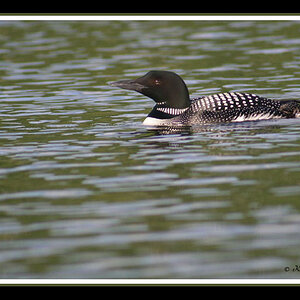
![[No title]](/data/xfmg/thumbnail/40/40356-883c642c8d24d2709b359f9c8b196fcf.jpg?1619739437)
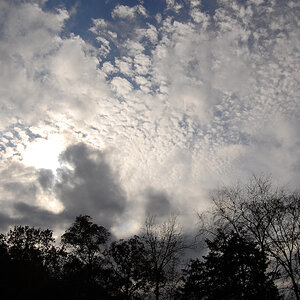
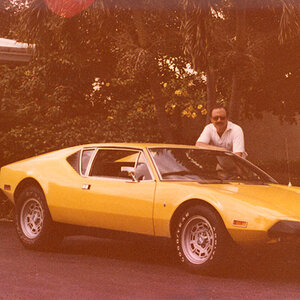
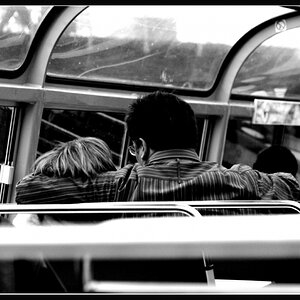
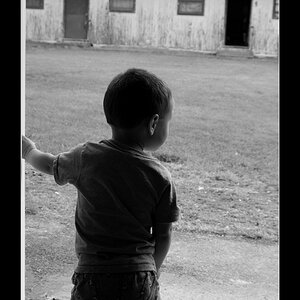

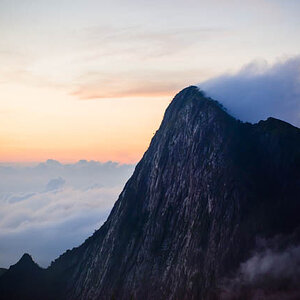

![[No title]](/data/xfmg/thumbnail/41/41762-58f644e561db7433f4f566037a965217.jpg?1619739884)
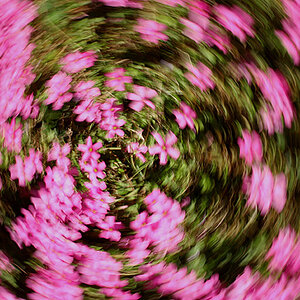
![[No title]](/data/xfmg/thumbnail/36/36099-feb952513e45dbf9f061ab28c1dc1121.jpg?1619737342)